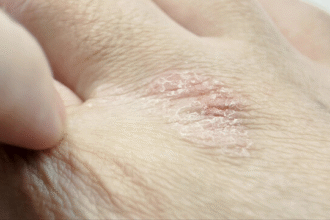Understanding Aneurysms: Causes, Risks, and Treatment
An aneurysm is an abnormal, localized dilation of the blood vessel wall. It can occur anywhere in the body, but is most common in the abdominal aorta and cerebral arteries. Aneurysms typically form due to weakening of the blood vessel wall, with common causes including atherosclerosis, infection, and congenital defects. If left untreated, aneurysms can rupture, leading to severe bleeding and life-threatening conditions. Early detection and treatment are crucial.
Types of Aneurysms
- Abdominal Aortic Aneurysm (AAA):
- Occurs in the abdominal section of the aorta.
- Often asymptomatic but can cause back or abdominal pain.
-
Rupture can lead to massive internal bleeding.
-
Cerebral Aneurysm:
- Occurs in the arteries of the brain.
- May present with symptoms like headaches, vision changes, or neurological deficits.
-
Rupture can result in a hemorrhagic stroke.
-
Other Types:
- Thoracic aortic aneurysms.
- Peripheral artery aneurysms (e.g., in the legs).
Causes and Risk Factors
Aneurysms are relatively rare but can result from various pathological changes in the arterial wall:
- Pathological Changes:
- Hardening and calcification of the arterial wall.
- Destruction of elastic fibers.
- Damage to the intima (inner layer of the blood vessel).
- Contributing Factors:
- Genetic mutations and congenital vascular wall dysplasia.
- Inflammation and infection.
- Trauma or injury to blood vessels.
- Lifestyle and Health Conditions:
- Smoking.
- High blood pressure.
- Atherosclerosis.
Symptoms
While many aneurysms are asymptomatic, symptoms may include:
- Pain in the affected area (e.g., abdomen, back, or head).
- Pulsating sensation in the abdomen (for AAA).
- Neurological symptoms like vision changes or weakness (for cerebral aneurysms).
Treatment Options
Treatment for aneurysms depends on their size, location, and risk of rupture:
- Surgical Interventions:
- Open Surgical Resection: Removal of the aneurysm and repair of the blood vessel.
-
Endovascular Therapy: Minimally invasive procedure using stents or grafts to reinforce the blood vessel wall.
-
Medical Therapy:
- Blood pressure management to reduce stress on the blood vessel wall.
-
Medications to address underlying conditions like atherosclerosis.
-
Monitoring:
- Small, asymptomatic aneurysms may be monitored with regular imaging to assess growth.
Prevention Strategies
To reduce the risk of aneurysms, consider the following:
- Lifestyle Modifications:
- Quit smoking.
- Maintain healthy blood pressure and cholesterol levels.
- Adopt a balanced diet and regular exercise routine.
- Medical Management:
- Regular check-ups for individuals with a family history of aneurysms.
- Early treatment of infections and inflammatory conditions.
By understanding the causes, risks, and treatment options for aneurysms, individuals can take proactive steps to protect their cardiovascular health and seek timely medical care when needed.







